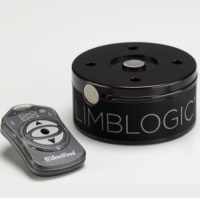MCOP Blog
Insights from our prosthetists about new technology, advances in prosthetics, & more
Vacuum Sockets – Technology Overview
April 19, 2013Elevated Vacuum Technology

What is it and why should you consider it?
Vacuum Assisted Suspension Systems are a relatively new suspension option for amputees. Typical vacuum suspension systems consist of a gel liner, a suspension sleeve and an air evacuation pump. The system functions by creating negative pressure between the liner and the socket wall.
Vacuum suspension systems were originally conceived as a technology to reduce complications for amputees suffering from peripheral vascular disease (PVD), a complication usually linked to diabetes. Today, vacuum systems are commonly used for all types of lifestyles and activity levels, and are often credited with helping to regulate volume fluctuations in the residual limb, making suspension more secure, and reducing shear forces on the limb.
The two most commonly used elevated vacuum suspension technologies are the Harmony system manufactured by Otto Bock and the LimbLogic system by WillowWood.
Benefits of Elevated Vacuum (EV) Systems
- Improves Sense of Self in Space (Proprioception)
- Proprioception is the scientific term for the perception of oneself in space, this is a very common challenge after the loss of a limb. As any amputee can attest, tripping and falling simply come with the territory after amputation. One major cause of this issue is an insecure suspension between the residual limb and the prosthesis. This is where elevated vacuum systems really shine, as they regulate the suspension in the socket and deliver unparalleled proprioceptive feedback to the prosthetic user. Vacuum suspension systems actively prevent separation between the liner and the socket, where other modes of suspension can begin to separate from the socket when force is applied. The beauty of EV systems is that they are designed to maintain a solid suspension at all times.
- Improves Blood Flow
- Because EV sockets minimize separation of the liner and socket better than all other suspension methods, the residual limb within the socket itself undergoes significantly less volume reduction throughout the day. Not allowing the residual limb to reduce in size allows blood vessels to maintain a more consistent size, lessening the inhibition of blood flow which is commonplace with traditional socket designs.
- Improves Socket Comfort
- Because EV sockets allows the residual limb to maintain the most natural geometric configuration, most users report that their comfort is enhanced. This is also the clinical experience of the MCOP team, and is the consensus opinion of current prosthetic research.
- Improves Walking
- The combination of reduced movement of the residual limb within the socket and better maintenance of residual limb volume typically results in a more consistent and symmetrical gait. A more consistent and symmetrical gate lessens the propensity to fall, and reduces the occurrence of lower back pain, degeneration due to osteoarthritis, and other ailments commonly associated with inconsistent gait dynamics.
Summary – Vacuum Prosthetic Sockets
Vacuum suspension technology is cutting edge of prosthetic suspension systems. For many individuals, it is the best possible option to maximum blood flow, minimize volume fluctuations, and improve comfort during walking. It is particularly valuable for amputees who suffer from PVD or other circulation limitations resulting from diabetes. To find out if vacuum socket technology is right for you, contact an MCOP vacuum specialist.